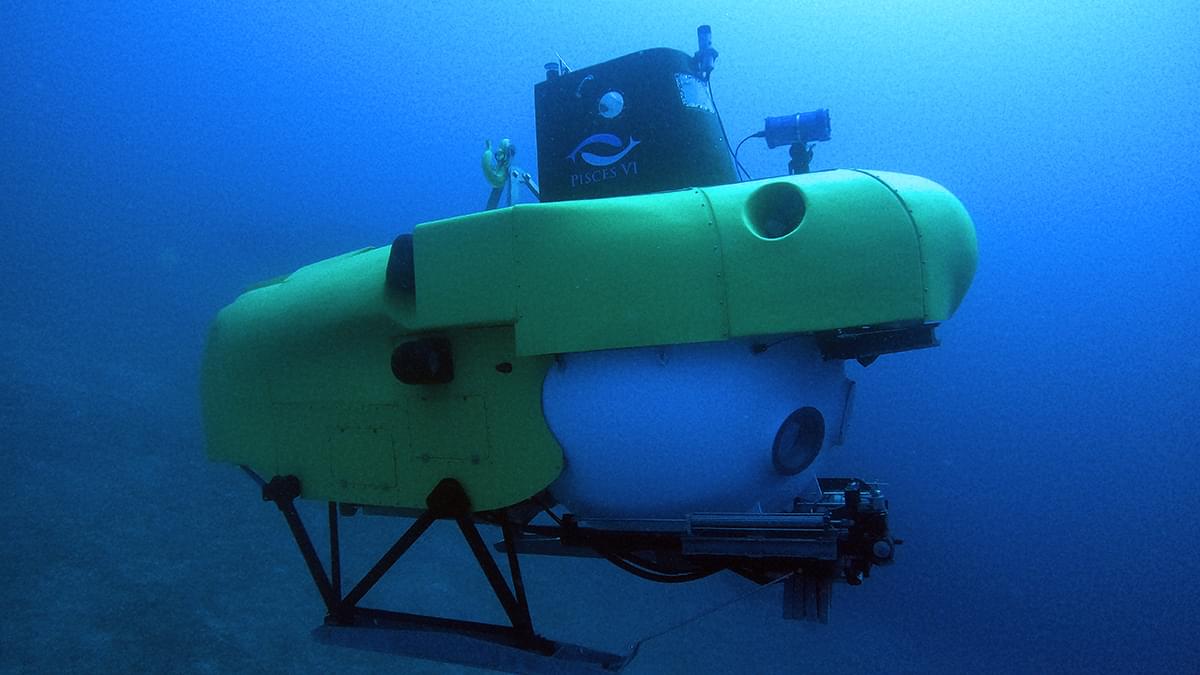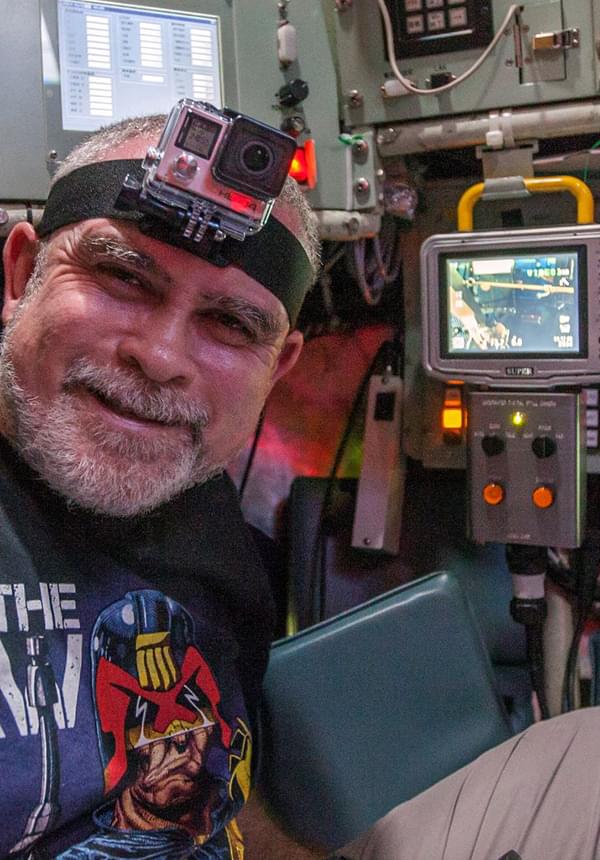



Submersible explorer
Come on a submersible dive with the Ocean Census team as they discover new life off the coast of Tenerife.
In this live lesson, Prof Alex Rogers will guide classes through how a submersible works, and then how scientists on Ocean Census are using submersibles to discover new species. We will then go on a dive off the coast of Tenerife and see what we can find, before looking at two specimens in a little more detail to see how they are adapted to life in the deep.
What do you think we will find down there?
Learning objectives
Describe submersible technology and how it works
Observe and note deep sea features and life
Develop questioning skills about ocean exploration
Share how deep ocean life is adapted to their environment
Preparation
This lesson is part of Ocean Census Live 2023. Classes may enjoy the other live lessons being broadcast from Tenerife this year. No specific preparation is needed.
There are three student sheets to support the live learning to print out and share with students.
Once you have booked the live lesson, an interaction app will appear on this page (you may need to refresh your browser). You will be able to submit questions and take part in any pre-lesson polls or quizzes.
If you have never joined a live lesson before, visit the support centre where you can find a range of technical and educational information.
Lesson steps
1. Introduction (5 minutes)
We welcome classes to this live lesson for Ocean Census Live 2023, meeting our speaker. This is also a chance to go over the learning objectives for the lesson and cover digital housekeeping.
2. Different parts of a submersible (10 minutes)
One of the submersible pilots will take students through the different parts of the submersible, the materials used, and why they are important. Students will be able to record their learning using the accompanying Student Sheet.
3. Diving deeper (15 minutes)
This section starts with students guessing what we might spot on our submersible dive. We are then guided through a dive by Professor Alex Rogers who will share some of the amazing features and life of the deep sea. Students will have their dive logs to complete. These can be used to generate further questions or as the basis for research activities at the end of the live lesson.
4. Adapting to the deep (5 minutes)
After the submsersible dive we will take a closer look at two of the specimens to see how they are adapted to life in the deep. This is a similar process to the work that the scientists do, mixing exploration and analysis.
5. Q&A (10 minutes)
This is a chance for students to ask any questions they have about species, life in the ocean, or working as a scientist.
Extension ideas
Students may wish to develop their dive log into a research activity, finding out more about the different features and types of life spotted during the dive.
Speakers

Prof Alex Rogers
Science Director, Ocean Census
Ocean Census Founding Partners


Submersible explorer
Come on a submersible dive with the Ocean Census team as they discover new life off the coast of Tenerife.
In this live lesson, Prof Alex Rogers will guide classes through how a submersible works, and then how scientists on Ocean Census are using submersibles to discover new species. We will then go on a dive off the coast of Tenerife and see what we can find, before looking at two specimens in a little more detail to see how they are adapted to life in the deep.
What do you think we will find down there?
Learning objectives
Describe submersible technology and how it works
Observe and note deep sea features and life
Develop questioning skills about ocean exploration
Share how deep ocean life is adapted to their environment
Preparation
This lesson is part of Ocean Census Live 2023. Classes may enjoy the other live lessons being broadcast from Tenerife this year. No specific preparation is needed.
There are three student sheets to support the live learning to print out and share with students.
Once you have booked the live lesson, an interaction app will appear on this page (you may need to refresh your browser). You will be able to submit questions and take part in any pre-lesson polls or quizzes.
If you have never joined a live lesson before, visit the support centre where you can find a range of technical and educational information.
Lesson steps
1. Introduction (5 minutes)
We welcome classes to this live lesson for Ocean Census Live 2023, meeting our speaker. This is also a chance to go over the learning objectives for the lesson and cover digital housekeeping.
2. Different parts of a submersible (10 minutes)
One of the submersible pilots will take students through the different parts of the submersible, the materials used, and why they are important. Students will be able to record their learning using the accompanying Student Sheet.
3. Diving deeper (15 minutes)
This section starts with students guessing what we might spot on our submersible dive. We are then guided through a dive by Professor Alex Rogers who will share some of the amazing features and life of the deep sea. Students will have their dive logs to complete. These can be used to generate further questions or as the basis for research activities at the end of the live lesson.
4. Adapting to the deep (5 minutes)
After the submsersible dive we will take a closer look at two of the specimens to see how they are adapted to life in the deep. This is a similar process to the work that the scientists do, mixing exploration and analysis.
5. Q&A (10 minutes)
This is a chance for students to ask any questions they have about species, life in the ocean, or working as a scientist.
Extension ideas
Students may wish to develop their dive log into a research activity, finding out more about the different features and types of life spotted during the dive.
Speakers

Prof Alex Rogers
Science Director, Ocean Census
Ocean Census Founding Partners

